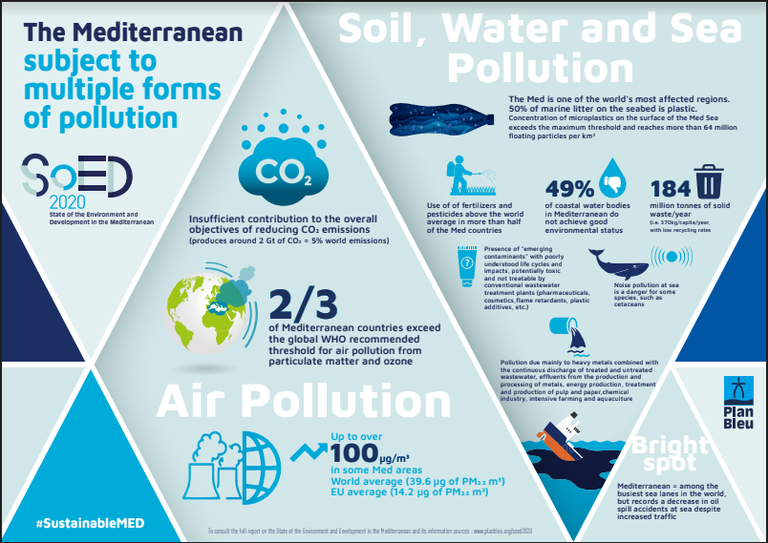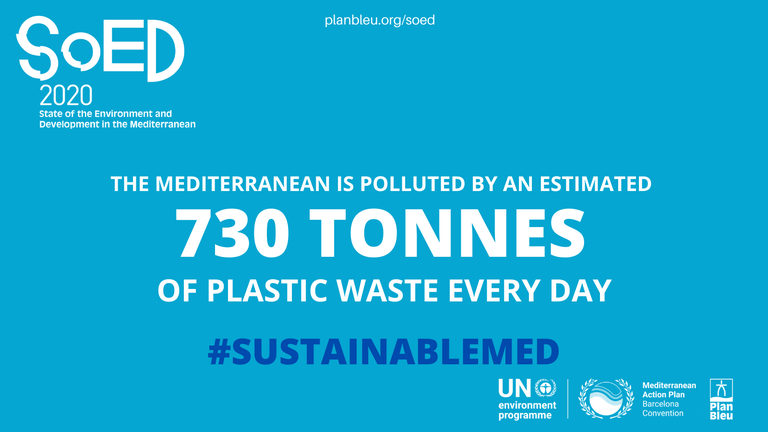The Mediterranean: A crossroads of several types of pollution
The Mediterranean is one of the most affected regional seas by marine litter due to the increase in the use of plastics, the lack of recycling, unsustainable consumption patterns, inadequate or inefficient waste management, strong pressures from tourism and maritime transport, associated with significant river flows.
Many illegal dumping sites are present along the coast and waste recycling, which is hindered by collection processes that are too often inefficient, generally remains minimal on the southern and eastern shores. Even if marine litter from land-based sources remains predominant, marine litter from maritime sources actively contributes to the problem, representing on average 32% of litter in the European Union, and reaching 50% in some areas of the basin.
In 2016, the Contracting Parties of the Barcelona Convention adopted the Action Plan for Sustainable Consumption and Production (SCP) in the Mediterranean. The Action Plan recognizes the need to change patterns of consumption and production in order to separate human development from degradation of the marine and coastal environment and provides guidelines to foster a transition to patterns of consumption and production sustainable, long term sustainability, circular economy and new paradigms for the use of resources, taking into account climate change and participating in the 2030 Agenda. The action plan is complemented by a roadmap, and further efforts are required for its effective implementation.


